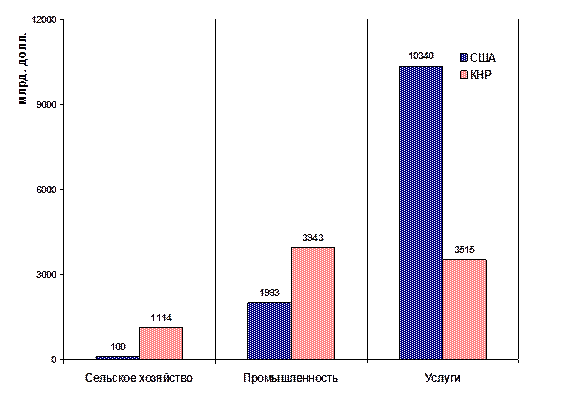Denmark has a well-developed and generally environmentally friendly transport system. The transport system has been improved in several areas including public transport, integration of the different modes of transport and new technologies like electric vehicles and modular vehicle combinations. However, Denmark is determined to continuously reduce the impact of the transport sector
on the environment.
Higher mobility and accessibility are important elements for growth and welfare in Denmark. Every day the citizens need transport to and from work as well as companies has a need to transport goods to customers – both locally and
globally.
The development of a greener transport system in Denmark combines growth and a high level of mobility, thereby ensuring both a well-integrated transport system and less noise and pollution.
The future solutions are to be found in a combination of different instruments and innovative technologies. A greener transport system combines a more efficient use of traditional fuels, the utilization of electric vehicle technologies, buses using bio-gas and a strong public transport sector.
Facilitating a greener transport system in Denmark is of high priority to the Danish Government. The aim is to make Denmark independent from fossil fuels by focusing on several initiatives such as less congestion, more use of public transports, more competitive railway sector and an increased use of energy efficient and environmentally friendly technologies.
Vocabulary.
Denmark-Дания
Impact – the action of one object coming forcibly into contact with another; a marked effect or influence (удар, воздействие, влияние).
Vehicle- something that moves things or people (машина).
Environment – the surroundings or conditions in which a person, animal or plant lives or operates (окружающая среда).
Accessible-able to be reached or easily got (доступный).
Welfare- help given, especially by the state or an organization, to people who need it, especially because they do not have enough money (обеспечение, социальная помощь, благополучие, благосостояние).
Ensure- to make something certain to happen (обеспечивать).
Initiative- a new action or movement, often intended to solve a problem (инициатива, почин).
Congested- too blocked or crowded and causing difficulties; describes roads and towns where there is too much traffic and movement is made difficult (перенаселенный, загруженный).
Exercise 1. Answer the questions.
1. What country has a well-developed and generally environmentally friendly transport system?
2. What does the development of a greener transport system in Denmark combine?
3. What are the future solutions?
4. What does a greener transport system combine?
5. What is the aim for facilitating a greener transport system in Denmark?
Exercise 2. Translate the following sentences using the key vocabulary above.
1. The anti-smoking campaign had made quite an impact on young people.
2. Road vehicles include cars, buses and trucks.
3. Tractors are farm vehicles.
4. We’re not doing enough to protect the environment from pollution.
5. People are becoming far more aware of environmental issues.
6. The resort is easily accessible by road, rail and air.
Read and translate the text.
Greenhouse effect
The greenhouse effect is the process by which radiation from a planet's atmosphere warms the planet's surface to a temperature above what it would be without its atmosphere.
If a planet's atmosphere contains radiatively active gases (i.e., greenhouse gases) the atmosphere will radiate energy in all directions. Part of this radiation is directed towards the surface, warming it. The downward component of this radiation – that is, the strength of the greenhouse effect – will depend on the atmosphere's temperature and on the amount of greenhouse gases that the atmosphere contains.
On Earth, the atmosphere is warmed by absorption of infrared thermal radiation from the underlying surface, absorption of shorter wavelength radiant energy from the sun, and convective heat fluxes from the surface. Greenhouse gases in the atmosphere radiate energy, some of which is directed to the surface and lower atmosphere. The mechanism that produces this difference between the actual surface temperature and the effective temperature is due to the atmosphere and is known as the greenhouse effect.
Earth’s natural greenhouse effect is critical to supporting life. Human activities, primarily the burning of fossil fuels and clearing of forests, have intensified the natural greenhouse effect, causing global warming.
The mechanism is named after a faulty analogy with the effect of solar radiation passing through glass and warming a greenhouse. The way a greenhouse retains heat is fundamentally different, as a greenhouse works by reducing airflow and retaining warm air inside the structure.
Vocabulary.
Greenhouse gases – gases that contribute to the greenhouse effect by absorbing infrared radiation; carbon dioxide and chloroflurocarbons are examples of greenhouse gases.
Greenhouse effect-the trapping of the sun’s warmth in a planet’s lower atmosphere, due to the greater transparency of the atmosphere to visible radiation from the sun than to infrared radiation, emitted from the planet’s surface (парниковый or тепличный эффект).
Absorb-to take something in, especially gradually (поглощать).
Flux-a substance added to a metal to make it easier to SOLDER (=join by melting) to another metal (флюс, плавень).
Fossil fuel – things like coal or oil, that come from plants or animals that are millions of years old (полезные ископаемые).
Radioactivity – the emission of ionizing radiation or particles caused by the spontaneous disintegration of atomic nuclei (радиоактивность).
Radiation – the emission of energy as electromagnetic waves or as moving subatomic particles, especially high-energy particles which causes ionization (радиация).
Substance – the real physical matter of which a person or thing consists and which has a tangible, solid presence (вещество).
Ecology – the branch of biology that deals with the relations of organisms to one another and to their physical surroundings.
Ecosystem – a biological community of interacting organisms and their physical environment.
Exercise 1. Answer the questions.
1. What is Greenhouse effect?
2. What are Greenhouse gases?
3. What human activities have intensified the natural greenhouse effect, causing global warming?
5. What analogy is the mechanism named after?
6. How does Greenhouse effect work?
Exercise 2. Decide if the following statements are true or false.
1. Greenhouse gases in the atmosphere radiate energy. T/F.
2. Earth’s natural greenhouse effect is critical to supporting life. T/F.
3. Human activities have intensified the natural greenhouse effect. T/F.
4. The way a greenhouse retains heat is fundamentally different. T/F.






